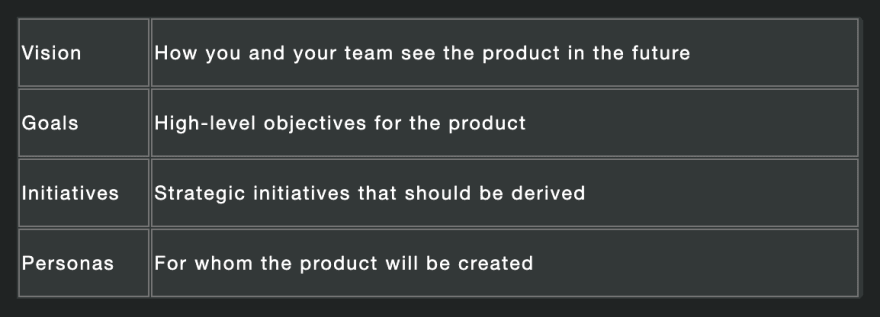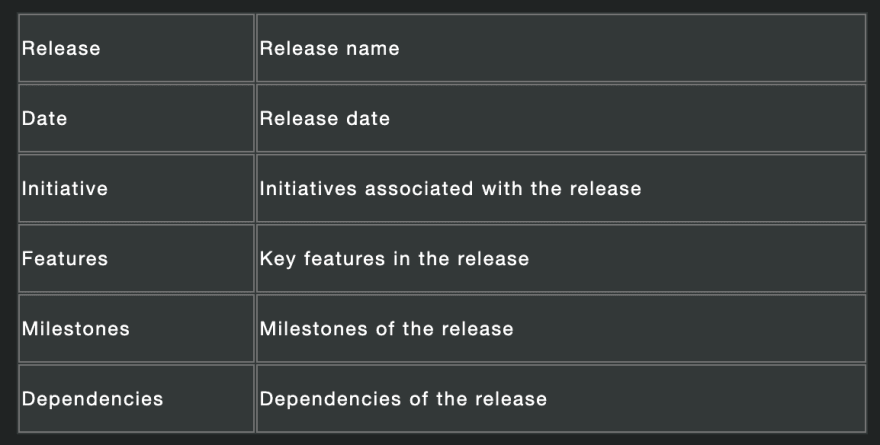When starting a project, we are often sure that our idea is impeccable and that a new product will easily take its rightful niche in the market. But it is not sufficient to have firm faith and a brilliant idea. Commercial success also requires meticulous work. The outcome of launching a new product also depends on the efforts that each project participant puts into it. To move towards that success, you need to define a clear requirement plan, namely a description of how you see the product in the future.
What is a PRD?
According to Wikipedia, “a product requirements document (PRD) is a document containing all the requirements for a certain product.” PRDs help to provide an understanding of what products should do. It is advisable, however, that such a document does not concentrate on “how” the product should be developed. That way the developers can use their experience to work out the optimal solution to each requirement.
Requirements documents should also describe the assumptions of the customer regarding your product. If the customer has specialist experience in formulating requirements, then this task can be undertaken by your customer. If this is not the case, then this section can be elaborated by the software development team (product manager or other specialists).
What is not a PRD?
People often confuse a product requirements document with a business requirements document (BRD). A BRD describes products in the context of the company as a whole. It details an initial assessment of project costs and risks for the company. Unlike a PRD, it doesn’t go into the specifications of a product or the way it should look like. More information on how to write business requirements documents as well as some free samples can be found on this website.
A PRD is also sometimes mistaken for a product specification document (PSD). A PSD is similar, since it also helps to record the required/expected specifications for product conceptualization. The difference lies in a PRD’s more technical inclination. Where a PSD contains a list of security requirements, for example, a product requirements document would describe the security requirements in detail.
Why a PRD document is necessary?
The need to create a PRD can be justified for many reasons. The first reason is that all the project participants should know the product requirements and share the same vision. There must be a clear understanding about the characteristics of the finished product.
With an available PRD, there is no need to explain the requirements to every team member separately. This saves time that can be spent on actual development rather than on unnecessary explanations.
Since all the information is recorded in a written form (and usually with some graphical representations), it eliminates the risk of confusion or misunderstanding. Information in PRDs can be accessed at any time and it can store any modifications to the requirements throughout the project term.
Based on our expertise, we can say that product requirements help to rationally distribute time and effort as well as eliminate most risks. However, it only applies if a PRD document has been written unambiguously. When the development process starts, you should bring your customer and the development team together and agree on the PRD content. Such meetings usually happen during the discovery phase.
Want to learn more about the discovery phase? Read more at What is Discovery Phase and How it Helps You Build a Better Product
How to Write a Product Requirements Document
Gathering all the requirements requires doing some research and dedicating a certain amount of time to it. The process includes studying your customers, competitors, as well as the potential of your team and technologies. It is unlikely that this preparation phase will be limited to just one meeting. Also, remember that each member of the team must be actively involved in this process.
Here, we have summed up the key points to structure a PRD:
Defining purpose
Setting product features
Determining release criteria
Preparing user flows
Making analytics matter
Shaping future work
Defining purpose
This is the first step that needs to be taken. Here, you need to determine for whom the product should be created, what problems should be solved, and how all that relates to the team vision.
You can base your judgments on the following elements to clearly and briefly describe the purpose:
Setting product features
As the next step in writing a product requirements document, you need to break the previously formulated purpose into the separate features that will be delivered. Here, you will need to provide explanations about what exactly your development team should create.
To describe the different product requirements relating to each feature, you can use the following structure:
Determining release criteria
A good practice is to include the release section in your PRD to silhouette what needs to be delivered and by when. This section will allow internal teams to understand the scope and timing of the release to plan their workload accordingly.
Here are some key points to include about the release:
Preparing user flows
User flows allow you to look at the potential user experience with the application. If fully-featured sites have enough opportunities for creativity, the development of mobile applications always requires seeking a balance between functionality and usability. Users should easily be able to access the most important functions from the main screen of an application without too many additional steps.
When creating a fully functional application, putting it all together in the most attractive and user-friendly way is a difficult task. If a development company doesn’t achieve it by not creating an intuitive app, then it will remain on the virtual software shelf. For the user, it is always easier to install a more understandable app than to spend time reading manuals or wandering about endlessly in search of features.
That’s why user flows in PRDs are of utmost importance. They are used to determine the ways to achieve the goals of users, as well as calculating positive and negative scenarios on the chosen path. User flows make it possible to understand whether each process in product development has a logical conclusion and can be created efficiently. Thus, users will spend the minimum amount of time to achieve their goals.
Designs, wireframes, prototypes, or other visuals attached to a PRD for each user story would be a great help too. They can greatly assist developers in visualizing the customer journey and make things much easier. For example, some great tools for prototyping are Zeplin, InVision, etc.
Making analytics matter
It is important to determine in advance how the success of all the product functions will be gauged. In the beginning, you need to describe a hypothesis. This is an estimate of how successful each product feature will be. Next, create success metrics to evaluate whether your assumption was right.
Finally, it is important to analyze your customer behavior and interaction with the application and its separate features. As a result of the analytical process, your PRD might include changes to create a better product.
Shaping future work
A PRD generally serves as a route plan for a software product and for the team which will develop it. It is advisable to include any applicable information that might help the team to understand how your product may progress over time. Also, if there are any questions or issues about the product, it is important to note them all in your PRD. This will help solve any future complications concerning the product.
How to understand if my PRD is good enough?
Below we have summarized the main characteristics that should guide you in preparing a well-thought-out PRD:
Correctness — The extent to which the PRD outlines the user’s goals
Unambiguity — Appropriate, well-written requirements which are the foundation for a software meeting expectations
Ranking — Prioritizing features in case there are shifts in the schedule, or when some features should be replaced as the development progresses
Verifiability — Every requirement stated in the PRD can be checked and justified
Modifiability — The document structure and style are such that it is easy to make any necessary changes to the requirements
Traceability — The origin of every requirement is clear and facilitates the referencing of each requirement in the future development
Completeness — Your PRD is complete if the following statements can be marked with a check:
- All significant requirements are included
- Responses to valid and invalid inputs are specified
- Required standards are conformed to
- There are references to all tables, figures, and diagrams, and all terms are defined
- Consistency — Your PRD is consistent if none of the requirements conflict.
Challenges You May Face When Writing a Product Requirements Document
Here are some of the challenges that we have experienced and observed from our customers when writing requirements documents:
Not knowing the audience
Without considering the requirements of a target audience, it is unlikely that you will get a valuable output product. In most cases, the audience will be developers. So, is your documentation tailored around that target audience?
For that purpose, make the document as logical as possible and include concise details. Provide a full understanding of the user, the problem, and the context. Also, it is better to avoid unrealistic dates for functional spec completion.
Text ambiguity
This is one of the most difficult challenges to overcome when writing PRDs. To avoid this, ensure that the text includes the necessary details for the context of requirements. It may consume some time, but it will pay off in the end if valid business cases for every requirement are provided.
It is important to use formal text for a product requirements document, so that multiple readers will have an identical or nearly identical understanding. Another effective way is to complement your document with user stories (please also see the section Creating user flows above). Insights into how the customer would potentially use the product features will help your development team to understand the target market.
Solutions squeezed into problems
This situation may negatively influence the creative approach of a developer when solving a problem. A better method is to check for gaps between the description of the problem and the plan for its solution. This ensures that the solution plan is valid and meets the requirements before the actual work begins.
Lack of a holistic approach
Sometimes requirements do not accomplish their goal and can’t be sold in the market. This may be due to some features, which were conceived without taking the full customer experience into consideration. To avoid this situation, go with a clear description of the intended use of your product. Do it from the customer’s perspective.
Best Practices for Writing a Product Requirements Document
Write from the user’s point of view
Describe the requirements from the user’s perspective. For this purpose, think of use cases and roles to describe your product requirements.
Use screenshots
A good practice is to use screenshots, layouts, or schemes to explain what is exactly meant. We all know the saying “а picture is worth a thousand words”. When it comes to a PRD, one screenshot is better than a thousand words.
Write in simple and unambiguous words
Imagine you are writing a PRD for your colleague from the team of developers. Your goal is to provide clear explanations about the requirements, so that he can create a product meeting these specifications. Where needed, use formal language and accepted terms to avoid ambiguity. Break long sentences into shorter ones.
Use templates
A PRD template can be really useful since it provides many advantages. First, templates use a standard form for the document, which makes the life of the development team much easier. Using templates also gives confidence that you have not forgotten to describe all aspects of your PRD.
Free templates for product requirements documents as well as other great resources for product management can be found on the usefyi website.
Prioritization
In the case of a full-scale project, it might be hard to implement all the functions that were described in a PRD at the same time. That is why the author of a PRD must give developers the ability to decide which features are of higher priority and which ones can be postponed if necessary. To do this, prioritize requirements by breaking down them into categories P1, P2, P3, etc. Such categorization should be based on the potential benefits that the implementation of these requirements can bring to your users and the company.
Describe “What” and “Why” instead of “How”
Typically, it is the product manager who is responsible for setting out user requirements, as well as what and why it needs to be developed. As mentioned above, describing “how” may negatively influence the creativity of the development team. So it is advisable to avoid writing in-depth instructions on how to implement each requirement.
Review and update
Do not treat a product requirements document as a set of strict rules. Instead, be open and always ready to update your PRD with the suggestions from your colleagues. This approach will help you improve the document, and your team will be able to create better products.
Describe your target audience and niche positioning
A great requirements doc should describe the target audience and product positioning. Such information helps developers and other team members to introduce end-users and, as a result, create more successful products. Our advice is to include this information whenever possible — it does not have to be very detailed, a couple of paragraphs should be enough.
Add a glossary
If new terms or familiar terms with a new sense are used in your PRD — make sure that there is a corresponding glossary. This will help ensure that all your readers (some of which may not have the necessary technical knowledge) understand what you have in mind.
Conclusion
To a large extent, a PRD can bring great results when it is well-designed and shared with every stakeholder. Use our tips and tricks to write a well-thought-out PRD. Also, ensure that every team member involved in the software development knows about the existence of the PRD, can access it and easily suggest updates when needed.













Oldest comments (0)